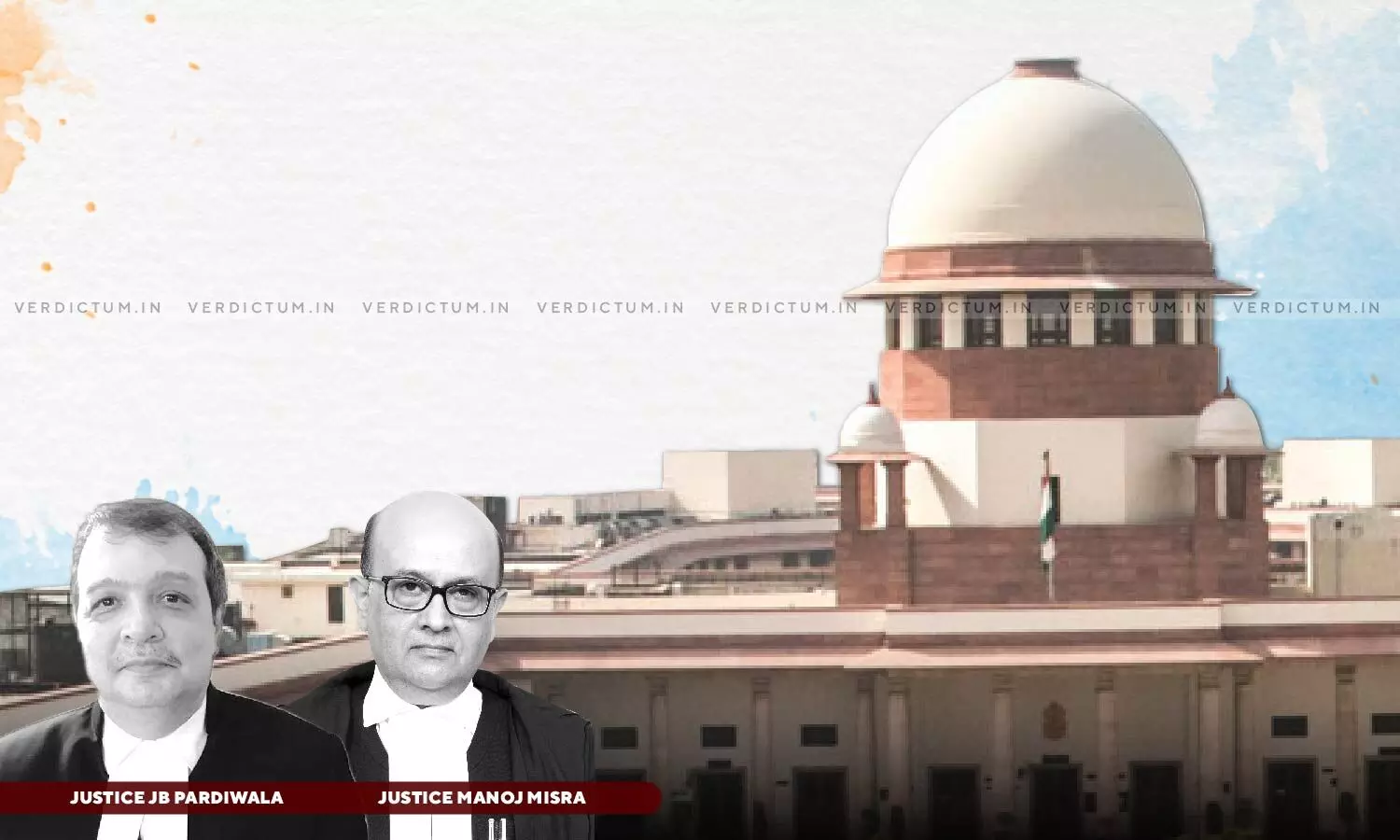
Delayed Filing Of FIR Gives Opportunity For Deliberation & Guesswork Especially When Incidents Occur At Night In Open Place Or Public Street: SC
 |
|The Supreme Court while acquitting the murder accused has observed that delay in the filing of the FIR gives an opportunity for deliberation and guesswork especially when the incidents occur at night in an open space or public street.
The Bench of Justice JB Pardiwala and Justice Manoj Misra in this context, observed -
"Although there might not have been a specific question put to PW-9 as regards the delay in lodging the FIR but the fact that it was a delayed FIR cannot be ignored. When an FIR is delayed, in absence of proper explanation, the courts must be on guard and test the evidence meticulously to rule out possibility of embellishments in the prosecution story, inasmuch as delay gives opportunity for deliberation and guess work. More so, in a case where probability of no one witnessing the incident is high, such as in a case of night occurrence in an open place or a public street."
The Court acquitted two murder-accused appellants citing the benefit of doubt while allowing two appeals that challenged a common judgment of the Chhattisgarh High Court that had upheld the conviction and sentencing of the appellants for murder.
Senior Advocate D.N. Goburdhun appeared for the Appellants and Advocate Prachi Mishra appeared for the Respondent.
The defense argued that the delay in lodging the FIR suggested a contrived prosecution story. They questioned the reliability of prosecution witnesses who provided inconsistent testimonies. In the alternative, they suggested that this might have been a street fight with unclear motives, possibly falling under Section 304 Part-I of the IPC.
The prosecution contended that the FIR delay was justifiable as the villagers guarded the body all night. They stressed that medical evidence and serology reports support the eyewitness accounts.
The Supreme Court considered the arguments presented by both sides and reviewed the case record. The Court found that several critical aspects of the case have not been adequately addressed by the trial court and the High Court, including the absence of a clear motive, discrepancies in witness testimonies, and other material issues such as the location of the alleged assault.
The Court carefully examined the prosecution's evidence to determine if it established the charges against the accused beyond a reasonable doubt. Before analyzing the testimonies of the main eyewitnesses the Court highlighted the significance of a named FIR filed by a person, who was not an eyewitness but lodged the complaint. The Court said that her testimony is crucial as it sheds light on how she became aware of the incident and why she lodged the FIR. The Court noted that neither the trial court nor the High Court adequately considered her deposition.
The Court emphasized that the delayed filing of the FIR is a significant factor, as it can lead to the possibility of embellishments in the prosecution's story. It is particularly important in cases where no eyewitnesses are present. The Court said, “When an FIR is delayed, in absence of proper explanation, the courts must be on guard and test the evidence meticulously to rule out possibility of embellishments in the prosecution story, inasmuch as delay gives opportunity for deliberation and guess work.”
The Court further discussed the importance of her testimony and questioned the reason behind filing a delayed FIR if no one informed her about the incident.
The Court outlined the principles for assessing the credibility of eyewitness testimony, especially when there are inconsistencies and doubts about the eyewitness's account. The Court after analyzing the testimony of main witnesses highlighted his inconsistencies, lack of detail regarding the assault's severity, and the possibility of mob violence.
The Court further questioned witness’s failure to inform her about the incident and the absence of an explanation for how the deceased's body was moved from the assault location to the temple.
“we do not find the testimony of PW-6 to be of such a stellar quality that it may on its own form the basis of conviction of the accused for the offence of murder. More so, because it leaves many gaps in the prosecution story, namely, as to how the body came near the temple and why a lathi was left near the dead body of the deceased when, as per the police story, all the three assailants had walked away with their respective lathis, which were later discovered at their instance.”, the Court added.
The Court concluded that the prosecution has not convincingly proven the circumstances surrounding the murder and highlighted the strong probability of mob action against the deceased.
The Court briefly commented on the prosecution's reliance on the seizure of lathis and clothes but noted that these circumstances were inconclusive, especially considering the presence of an unexplained lathi near the deceased.
“We are of the view that this is a fit case where the accused are entitled to the benefit of doubt.” the Court added.
Finally, the Court allowed the appeals, setting aside the judgments of the lower courts, and acquitted the accused, citing the benefit of the doubt. The Court also discharged their bail bonds and ordered their release if not wanted in any other case.
Cause Title: Harilal Etc. v. State of Madhya Pradesh, [2023INSC801]
Click here to read/download Judgment